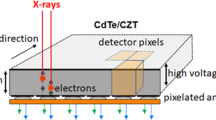Abstract
The accuracy of coordinate transformation from the computed tomographic (CT) space to the stereotactic frame space was analysed for frame-based stereotactic systems which use a localisation frame and coordinate transformation based on matrix calculation. The coordinate transformation was divided into three consecutive steps: (1) transforming the localisation frame into the CT image built up from pixels with distinct attenuation values, (2) determining the rod centres of the localisation frame in the CT image, and (3) coordinate transformation from the image to the frame space using the centres of the rods in the image space and algebraic, matrix-based calculation. The error contribution at each step was evaluated separately and its effect on the subsequent mathematical operations was analysed. The first step dealt with the influences of the mathematical and physical properties of the CT on the image of the localisation frame. Noise, slice thickness, convolution filter, dimension of the pixel matrix, and image processing had an influence on the attenuation values in each pixel. Above all, the slice thickness had an effect on the shape of the oblique rods in the CT image. At the second step, the main error contribution was due to the method by which the centre of the rods was calculated. The most accurate method was to determine the centre of gravity using the attenuation values as single mass points (with accuracy in the range of ±1/10 pixel, or ±0.125 mm), followed by rounding off the centre of gravity and the highest pixel value in the square matrix R2(N) within 1 pixel. Pointing with a cursor under visual control was accurate to 1 pixel and the pixel with the highest attenuation value showed deviations of up to 2 pixels in the x and y axes. Thus, the methods differed by a factor of 20. The influence of the CT mathematics and physics on the determination of the centre of the fiducials was negligible in comparison to the method of calculation used. There was no systemic error due to the filtred back projection algorithm. Data input errors due to noise were in the range of 1/10 pixel. The effects of the remaining physical influences were all in the range of the error due to noise. In particular these results speak in favour of no influence of slice thickness on coordinate transformation.
Similar content being viewed by others
Author information
Authors and Affiliations
Rights and permissions
About this article
Cite this article
Grunert, P., Mäurer, J. & Müller-Forell, W. Accuracy of stereotactic coordinate transformation using a localisation frame and computed tomographic imaging . Neurosurg Rev 22, 173–187 (1999). https://doi.org/10.1007/s101430050014
Issue Date:
DOI: https://doi.org/10.1007/s101430050014




